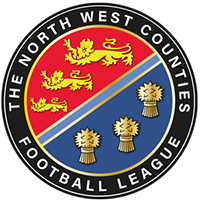
Emblematically Speaking - the finale
Tue 12th February 2019 | General | By Stewart Taylor
After 62 articles under the title “Emblematically Speaking” we finally reach the end.
Yes, this is the end - not just because we have covered all of the clubs in the Hallmark Security League over this season and last, but also taking into consideration that we live in a rapidly changing world.
The Hallmark Security League is made up of clubs which can trace their history back over a century, clubs formed within the last decade and many in and between these two extremes.
From what we have discovered in this series, with our newly discovered knowledge of the rather arcane language and imagery of classical heraldry, we can now simply look at a club emblem and have a pretty good guess as to the antiquity of a club.
I give you as examples of clubs with a long and illustrious history, Bacup Borough and Nelson. If we take a quick look at the emblems of these two clubs we see what is, in effect, the town coat of arms.
Take that just a little further and, as we have seen, an understanding of the devices on the coat of arms gives us a potted history of the town over many years.
If we look to more recent times, we can use the examples of 1874 Northwich and Lower Breck. In these emblems the main feature is simplicity and a complete absence of references to classical heraldry thus, for the most part, giving little or no history relating to the town or area the club represents.
Time for a small diversion and a look at a word which, at least for me, was unknown until it was introduced to me by the Chairman of City of Liverpool FC last season.
That word is “meme” and, specifically “internet meme”. A look back at the article relating to the emblem of City of Liverpool FC would be informative at this point but, for the sake of this narrative, let’s just say that a meme in this context is an image which is spread rapidly by internet users.
The key point of a meme in the context of an emblem relates to the speed of assimilation of the image. In other words, the almost immediate understanding of what the image represents.
Try it for yourself by going back to the emblems of Bacup Borough, Nelson, 1874 Northwich and Lower Breck and see how long it takes you to work out what the emblem is representing.
It has been said above, and it is worth repeating, that we live in a rapidly changing world, and many, many aspects of society reflect that rate of change.
One aspect which won’t change is time, at least not if we limit ourselves to this terrestrial existence. So what this means is that rapid changes, mostly driven by technology, open up a wider world for us all, thus putting greater demands on our time.
The conclusion from that is that if we want to incorporate more and more interactions into our daily life, then the time available for each of those interactions reduces.
From that, we can safely say that the more obvious to the eye and the brain something is, then the more likely we are to identify with it. So here we reach the idea of what an emblem is supposed to do, that is to identify the organisation which uses that emblem.
As further thought on this subject we can look to the emblems of Cheadle Town and Stockport Town.
Since the articles relating to these clubs were written and published last season both clubs have updated their emblems. The interpretation of the Cheadle Town emblem we featured last season told us a tremendous amount about the history of the town of Cheadle.
What we have now is a relatively simple emblem which I would challenge anyone to look at and derive the history of Cheadle from. Of course, that’s not the point of the emblem, and we could readily say that the new emblem is, indeed, a meme.
The change in emblem of Stockport Town is equally profound where we have gone from an emblem which featured a number of devices relating to the town of Stockport, to a simple depiction of a lion to represent the nickname of the club, and this from a club which was formed as recently ago as 2014. See what I mean about rapid change!
And thus we have the reasoning behind why this series has reached a natural conclusion in more ways than one. There is a limit as to how a 500-700 word article can be imagined, conjured up some may say, when there is little to work with.
In truth, I would find it very hard, if not impossible, to write a new story about the recently introduced emblems of both Cheadle Town and Stockport Town – there is simply not enough to work with.
I would like to finally end this series by paying tribute to the people who have helped to make it happen.
First of all, to the League Media Officer Mr. Ian Templeman. After all, this series was Ian’s idea in the first place.
Then we have all of the officials of clubs in the Hallmark Security League who have kindly sent in information relating to their club emblems.
And, of course, all of the readers who have not only taken the trouble to read these articles but also to feed back further information.
All that remains for me to say is enjoy the remainder of the season and, who knows, I may be back with a new series of articles next season if only someone can think of a suitable topic!
 Emblematically Speaking - the finale
Emblematically Speaking - the finale
Tue 12th February 2019 | General
By Stewart Taylor

After 62 articles under the title “Emblematically Speaking” we finally reach the end.
Yes, this is the end - not just because we have covered all of the clubs in the Hallmark Security League over this season and last, but also taking into consideration that we live in a rapidly changing world.
The Hallmark Security League is made up of clubs which can trace their history back over a century, clubs formed within the last decade and many in and between these two extremes.
From what we have discovered in this series, with our newly discovered knowledge of the rather arcane language and imagery of classical heraldry, we can now simply look at a club emblem and have a pretty good guess as to the antiquity of a club.
I give you as examples of clubs with a long and illustrious history, Bacup Borough and Nelson. If we take a quick look at the emblems of these two clubs we see what is, in effect, the town coat of arms.
Take that just a little further and, as we have seen, an understanding of the devices on the coat of arms gives us a potted history of the town over many years.
If we look to more recent times, we can use the examples of 1874 Northwich and Lower Breck. In these emblems the main feature is simplicity and a complete absence of references to classical heraldry thus, for the most part, giving little or no history relating to the town or area the club represents.
Time for a small diversion and a look at a word which, at least for me, was unknown until it was introduced to me by the Chairman of City of Liverpool FC last season.
That word is “meme” and, specifically “internet meme”. A look back at the article relating to the emblem of City of Liverpool FC would be informative at this point but, for the sake of this narrative, let’s just say that a meme in this context is an image which is spread rapidly by internet users.
The key point of a meme in the context of an emblem relates to the speed of assimilation of the image. In other words, the almost immediate understanding of what the image represents.
Try it for yourself by going back to the emblems of Bacup Borough, Nelson, 1874 Northwich and Lower Breck and see how long it takes you to work out what the emblem is representing.
It has been said above, and it is worth repeating, that we live in a rapidly changing world, and many, many aspects of society reflect that rate of change.
One aspect which won’t change is time, at least not if we limit ourselves to this terrestrial existence. So what this means is that rapid changes, mostly driven by technology, open up a wider world for us all, thus putting greater demands on our time.
The conclusion from that is that if we want to incorporate more and more interactions into our daily life, then the time available for each of those interactions reduces.
From that, we can safely say that the more obvious to the eye and the brain something is, then the more likely we are to identify with it. So here we reach the idea of what an emblem is supposed to do, that is to identify the organisation which uses that emblem.
As further thought on this subject we can look to the emblems of Cheadle Town and Stockport Town.
Since the articles relating to these clubs were written and published last season both clubs have updated their emblems. The interpretation of the Cheadle Town emblem we featured last season told us a tremendous amount about the history of the town of Cheadle.
What we have now is a relatively simple emblem which I would challenge anyone to look at and derive the history of Cheadle from. Of course, that’s not the point of the emblem, and we could readily say that the new emblem is, indeed, a meme.
The change in emblem of Stockport Town is equally profound where we have gone from an emblem which featured a number of devices relating to the town of Stockport, to a simple depiction of a lion to represent the nickname of the club, and this from a club which was formed as recently ago as 2014. See what I mean about rapid change!
And thus we have the reasoning behind why this series has reached a natural conclusion in more ways than one. There is a limit as to how a 500-700 word article can be imagined, conjured up some may say, when there is little to work with.
In truth, I would find it very hard, if not impossible, to write a new story about the recently introduced emblems of both Cheadle Town and Stockport Town – there is simply not enough to work with.
I would like to finally end this series by paying tribute to the people who have helped to make it happen.
First of all, to the League Media Officer Mr. Ian Templeman. After all, this series was Ian’s idea in the first place.
Then we have all of the officials of clubs in the Hallmark Security League who have kindly sent in information relating to their club emblems.
And, of course, all of the readers who have not only taken the trouble to read these articles but also to feed back further information.
All that remains for me to say is enjoy the remainder of the season and, who knows, I may be back with a new series of articles next season if only someone can think of a suitable topic!


